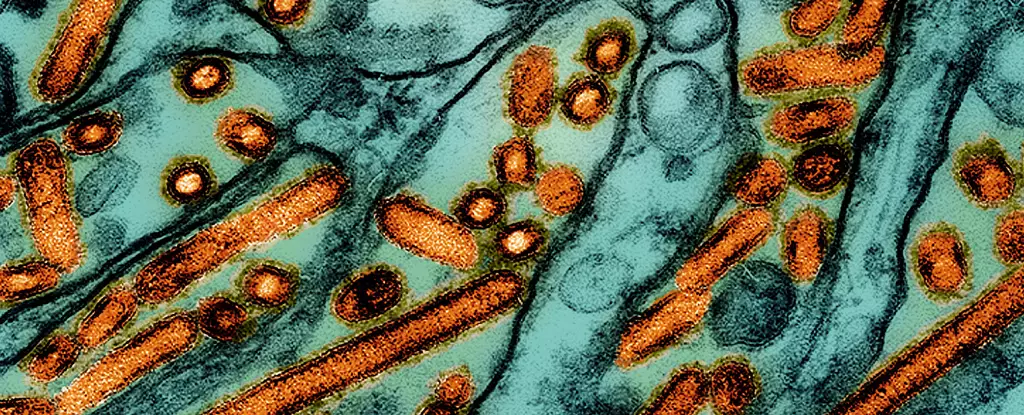The emergence of severe avian influenza cases in the United States has sent alarm bells ringing among health officials and the public alike. An elderly individual in Louisiana is now reported to be in “critical condition” due to a serious H5N1 avian flu infection, marking the first significant human case of its kind during the current outbreak of 2024. This case highlights the urgent need for an intensified examination and response to what could signal a wider public health crisis.
As of now, the Centers for Disease Control and Prevention (CDC) records a total of 61 avian influenza infections across the country this year. Prior cases encountered by the CDC exhibited mild symptoms, with patients primarily recovering at home. However, the alarming nature of the Louisiana case has crystallized existing fears, mirroring severe incidents seen internationally, such as a recent hospitalization in Canada involving a teenager grappling with the same virulent strain.
The Louisiana health authorities have indicated that the patient had contact with sick and deceased birds from backyard flocks, raising critical questions about how human exposure to the virus is occurring more frequently. Health officials pointed out the connection to avian sources, signaling a pivotal risk factor in outbreaks of H5N1 infection.
The Louisiana patient’s experience is particularly concerning due to severe respiratory illness associated with the H5N1 strain. A spokesperson from the health department noted that the patient, over the age of 65 and with existing health conditions, faces heightened risks. Data from the CDC revealed that historically, this virus shows an alarming tendency for severe manifestations in humans, with mortality rates in past global outbreaks reaching as high as 50%.
Demetre Daskalakis, a senior official from the CDC, articulated the necessity of a coordinated response to mitigate the impacts of the virus in the U.S. Given the substantial evidence of severe illness associated with H5N1, health agencies are turning their attention toward formulating a proactive plan to handle potential escalations.
In response to these concerning developments, California has declared a state of emergency. Governor Gavin Newsom cited the need for expedited action to equip governmental bodies with the resources required to navigate the outbreak effectively. The state aims to reinforce its monitoring systems alongside bolstering support for its agricultural sector, which has shown vulnerabilities amid this crisis.
With increasing infections prompting unrest at multiple levels, it is clear that states are forced to adopt emergency measures that reflect the seriousness of the situation. California’s action serves as a model for other states grappling with similar concerns, emphasizing the importance of preparedness in order to flatten the curve of potential infections.
Recent genetic sequencing of the H5N1 virus isolated from the Louisiana patient revealed it belongs to the D1.1 genotype, which has surfaced not only in wild birds but also among poultry in the U.S. This strain mirrors those involved in cases reported in Washington state and in British Columbia, emphasizing cross-border implications of the disease.
Unfortunately, experts like Rebecca Christofferson at Louisiana State University raised concerns about the sufficiency of surveillance in detecting these spillover events. The ambiguity surrounding transmission mechanisms, including whether there may be unreported cases emerging from asymptomatic spread, adds another layer of complexity to this health crisis.
Increasing vigilance is crucial, as noted by epidemiologist Meg Schaeffer, who warns that avian influenza is decidedly on the brink of evolving into a wider pandemic. In light of these warnings, U.S. health officials have been proactive in stockpiling vaccines geared toward bird flu, signaling a commitment to mitigate risk factors associated with potential human transmission.
Furthermore, recent advances in mRNA vaccine technology offer a glimmer of hope with promising results demonstrated in experimental studies on ferrets. Such developments present new avenues to explore in the war against infectious diseases of zoonotic origin.
Compounding these fears is the U.S. Department of Agriculture’s new mandate requiring raw milk samples from dairy operations to be shared upon request and demanding reporting of any positive bird flu tests. These regulations serve as a reminder that ongoing research and stringent monitoring are essential in combating the complexities surrounding avian influenza outbreaks.
The emergence of severe avian influenza cases in Louisiana highlights the critical importance of surveillance, public health responses, and inter-agency cooperation in combatting potential pandemics. As more cases are reported, the national healthcare system’s ability to respond effectively will be pivotal in preventing broader community transmission and safeguarding public health. Continuous vigilance, enhanced monitoring capabilities, and a robust emergency preparedness plan remain fundamental in overcoming this evolving health threat.


Leave a Reply